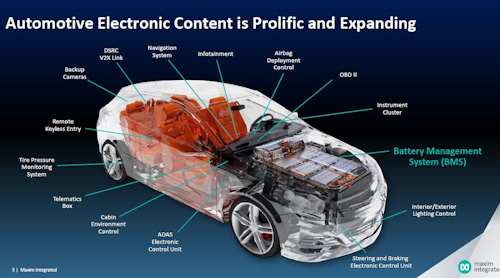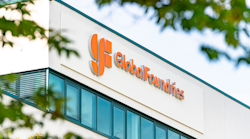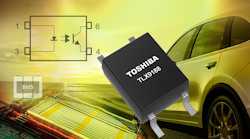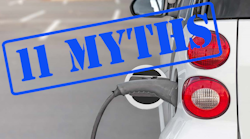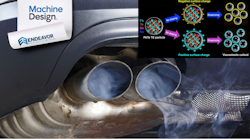Published in the July 11, 1991 issue
Yes, I could—just barely. With no heat to spare, I was able to get a good sweated joint. If I had wire any heavier than that, I’d need at least two little irons, or preferable, a big iron or solder gun. But so many people have written in after reading my previous column (//www.ptmhosting.com/article/articles/what-s-all-this-splicing-stuff-anyhow-6151) about splicing (seeElectronic Design, Dec. 27, 1990, p. 72), that I just had to do a Sanity Check.
Several people said, “If you had a bad splice, with corrosion or poor crimping, after a while you might get audible nonlinearity and distortion from the poor connection.” But the Newspaper Expert did not say, “A bad splice may hamper the sound quality,” he said, “A splice…”
Now, it’s true that I never said explicitly, “a good splice,” or “a soldered splice,” but obviously it’s only fair to assume that a decent splice is what we’re talking about. (There’s no point in making any splice unless it would be a good splice.)
One reader commented, “You may start out with a good splice, which becomes bad over time.” I replied that, by definition, if a splice is good, it will stay good; if it goes bad, then it wasn’t very good. There are lots of soldered connections in my world, both at home and at work, and I really must say that very, very few of them go bad in any given year.
Now, it’s also true that in a car where there’s heat, vibration, and moisture, it’s not always easy to ensure a splice with good reliability over many years. So let’s not say that, under extenuating circumstances,no剪接曾经变得不好。如果我的后廊朝太平洋望去,那么由于盐喷雾和腐蚀,每隔几年就失去每隔几年的扬声器剪接的可能性就可以忽略不计。但是,这是一个特殊情况。
Some people say that for thebestsplice, you should use silver solder. Maybe it would “sound better” to some people (I doubt they could tell any difference in a double-bind test), but I am very dubious. I have done some silver soldering and you need a hot torch, and if you’re not an expert, it’s not that easy to make a silver-soldered joint, with the borax flux and all. Besides, with the wire that hot, I would expect the wire adjacent to the soldered area to get badly oxidized and corroded, and the insulation to be badly heated-over, too. I think silver soldering is alousyidea.
The other way to make a splice is with a mechanical clamp. The wire-nuts in my house wiring are quite reliable, and some of them vary more amperes in a day than my speaker cables do in a month. I don’t plan to snip out an old wire-nut and check it for low resistance and low nonlinearity, but I suspect they would perform well because the whole idea of a reliable connection is the gas-tight crimp, where no corrosion can sneak in between the two pieces of metal.
If you want to argue oxygen-free copper, go right ahead. I’m not going to tell you what kind of wire to use, or what not to use. I’m just saying that you can, in almost every case, make a splice in it.
Now, it’s true that you might have such a big conductor that you can’t solder it or get a crimp fitting around it. If you had to bolt it, it might lookreally funnyto see a lump the size of your fist under the sofa. But, hey, you really want big wires, you can have big wires.
It’s conceivable that some of the ultra-high-tech wires are made with such sophisticated technology that when you buy them, the Owner’s Manual tells you that soldering or splicing them is impossible. But I wouldn’t know about that. When I buy 14-gauge wire, it doesn’t come with any Owner’s Manual, but I know darned well I can solder it. With a big,hotsoldering iron.
Recently, a reader pointed out that you can buy some splicing kits from 3M, such as Type U1R, which is recommended for general butt slicing. The little subassembly is “filled with a sealant to protect the connection against moisture.” You can find this in any Newark catalogue. Unfortunately, it’s only specified for AWG 19-24, so most speaker cables would not find that a good match.
And when I called up 3M, they did not have any particular literature or documentation available to show exactly what reliability advantage is gained, or, under what environmental conditions you get the biggest improvement in reliability. I tried to invoke a “need to know,” but they weren’t prepared to show an engineer or customer any documentation. Maybe if you sound like a big customer, they might pay attention.
The March 28, 1991 issue ofElectronic Designcarried a neat article by Randy J. Kempf (Molex Inc., Lisle IL, 708-969-4550) about “How To Recognize a Good Conductor Crimp.” He points out various procedures for making sure that your crimping tool can do a reliable job. Even a 0.125-inch diameter brass pin can reliably carry 20 A—but that’s for quite the normal connector for speaker cables. Still, Mr. Kempf has some good guidelines for determining if you’re making good crimped connections to your wire.
And the IEEE Transactions on Components, Hybrids, and Manufacturing Technology (Vol. 14, March 1991, p. 214-217) discusses the technique for drawing a constant 20-mA dc “Sealing Current” through telephone circuits. Mr. Rudolf Schubert of Bellcore, Red Bank, N.J., discusses carious test procedures and current biases to try to prevent a degradation of resistance in wire splices with poor mechanical integrity. The paper arrived at the general conclusion that if your wires are just loosely twisted together and you want to prevent the series resistance from rising as high as 1 Ω, a 20-mA bias current is inadequate, and a current as high as several amperes may be required. Hey, it was still worth a try.
Personally, I think Fred Davis (of Hamden, Conn.), who wrote me after reading my original splicing column, has one of the best speaker-cable ideas. He uses multiconductor ribbon cable. Fred solders up every other conductor ashot, and then every other conductor asground, all appropriately paralleled to get very low inductance, moderately low resistance, and very low phase shift. You don’t have to use 00 gauge wire just to get good results; in fact, the fatter the wire, the more problems you have… the ratio of inductance to resistance tens to getworse, notbetter. I just wanted to point out, it really isnotthat hard to make a GOOD, RELIABLE splice. There are more ways than two to make a good splice.
All for now. / Comments invited! / RAP / Robert A. Pease / Engineer



